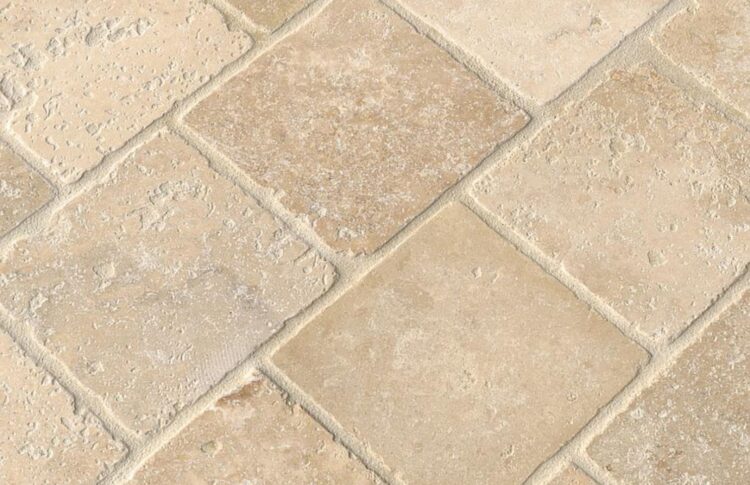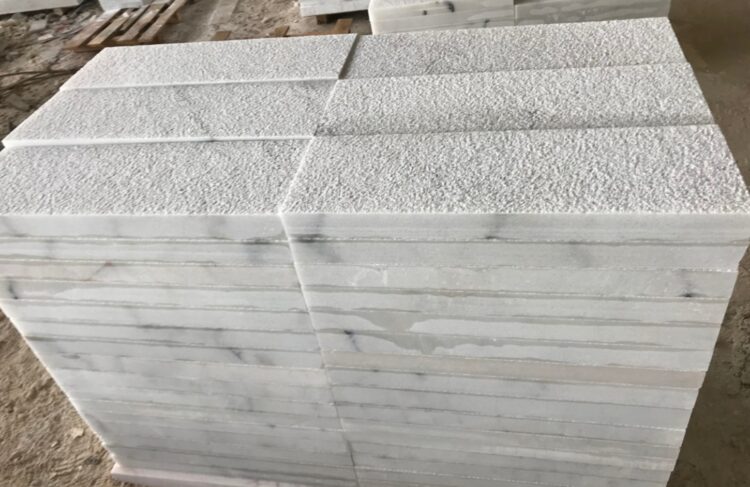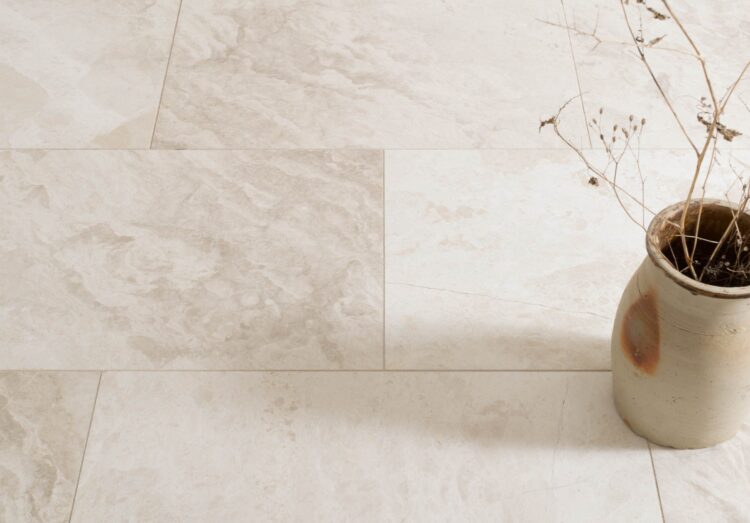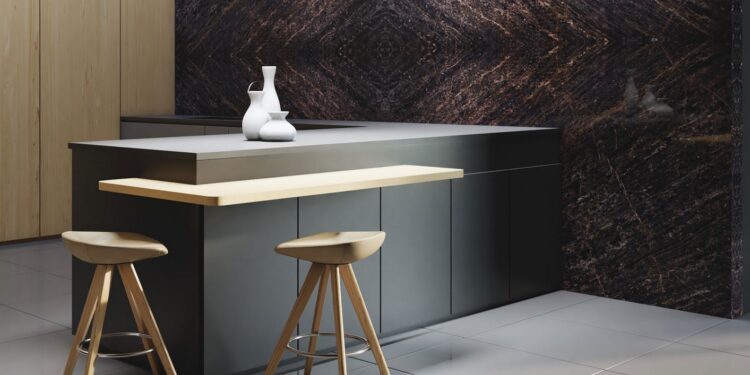Homeowners, developers, and interior decorators are gradually gravitating towards tactile and textured ends. Thanks to designers’ creativity and established stone experts selling unique pieces in natural stone, it is common to see new unique designs. The unique textures are increasingly noticeable in home décor and design from coats to counters, hardwood floors to crushed velvet.
1. Tumbled Stone Finish
Tumbled tiles have an antique look that is soft, smooth, and worn out. Tumbling is a process in which a rubber or plastic drum includes blocks, sand, and water. With the materials tumbling in the drum, the rock and the sand rubber on the stone surface gives it a twisted finish. Long tiles or stone labels cannot be tumbled as they may break during the process. The tumbled stone finish has many characteristics.
This process facilitates the pillars’ aging and makes the surfaces and corners very soft on the pillar. The pores have to be screened with sealants in travertine stone after the stone has tumbled. It takes about 3 to 5 weeks to complete the three stages of the tumbling process. Marble, granite, travertine, quartzite, and calestone are the most common stones with this finish.

2. Polished Stone Finish
A polished stone finish is a reflective surface that can be finished on a crystallized stone. You can accomplish this by sanding, grinding, or stone buffing. The polished finish improves the stone’s appearance and natural look. The textures, designs, and patterns that rely on the stone’s mineral content are noticeable and create a unique room attraction.
Polishing has little effect on the stone’s porousness. Sealants are also used in rocks to close the pores, resist moisture and tamper. Polishing gives the natural stone a very smooth and refined appearance. The polished design can lead to a slippery floor; hence this finish is commonly used as wall panels, entrances, lobbies, and counter-tops. Cleaning and maintaining polished surfaces are straightforward if you follow the right natural stone care guide.
3. Bush Hammered Finish
A hammered bush finish is accomplished using a high-impact machine or using a masonry tool to pit the stone surface consistently. It’s also a finish used for most concrete surfaces. A rough, weathered texture is produced by repeatedly influencing the surface of the material. This will improve the natural tone changes in the material and increase the space’s interest.
The finish provides practical intent over and above aesthetics. New concrete or flooring material better binds to the surface when used on an existing concrete surface. A hammered-bush finish offers a framework for a stone that is ideal both indoors and outdoors. It is a standard finish in wet environments because the sloping strength rating is higher than other material finishes.

4. Leather Stone Finish
The leather stone finish is smooth and mattes the natural stone’s surface without or with minimal light. You can obtain a similar result by following the same process and abrasive materials, but polishing stops earlier, and the stone does not tamper. It has a lighter surface tone, but it maintains the overall color and width. Tiles are soft but pretty brittle and need screening. This form of finish is applicable in different stones and best for heavy-duty areas, like floors, steps, thresholds. You can also apply it for indoor and outdoor use.
5. Hones Stone Finish
Hone stone finish is a smooth-looking surface with little to no shine. The appearance depends on the finish’s stone form though the sharp stone surface may have a matte and a subtle look. However, the sharp finish can give the surface a little “gray out,” mainly when applied to dark-colored stones.
Surfaces with a hone stone finish are often sealed due to their bland look. The main advantage of this stone, however, is that the defects are easy to hide. This finish is suitable in multiple areas like stairs, floors, tabletops, wall coverings, and more.

6. Natural Cleft Stone Finish
A natural stone cleft finish helps users to take advantage of the all-natural stone look. Users have to layer and split the materials to achieve this finish. The result is a natural texture and finishing surface with a splitting.
This finish gives an irregular appearance and cannot be duplicated, as it happens naturally. A natural cleft finish is commonly available in slate and sand, but you can find some granites and limestones with very heavy fastenings.
The distinctive textures and patterns linked to the natural finish are likely to evoke particular interest. However, you cannot get continuity from one piece to another in the surface as the pieces are unique.
Even with its imperfections, natural will still impress your visitors with the right person for the job as most will assume it is part of the appeal. Since the finish does not give a consistent pattern, irregularity is part of its beauty. Note that natural cleft stone finishes are restricted to some stone types; hence it is best to seek professional advice for versatility.
7. Sand Blasted Finish
Experienced stone experts like Saturnia Travertini only produce the sandblasted stone finish. An air gun for a very finely textured and granular finish is applied to the stone’s surface with high-pressure silica sand. This gives a rugged yet smooth look that can fit well in rustic to modern chic design styles. The stone finish is well known for its small sand-forming craters that emphasize the stone’s natural color.

8. Sawn
Sawning of the stone with the diamond disc teeth produces this finish. It creates a very rough and uneven surface with small undulations and furrows. Sawn finish lightens the stone, gives a matte feel, and is best in external paving, stairs, paths, entrances, and courtyards.
Conclusion
The construction and building design has changed in many aspects. Designers use different natural stone finishes to create unique interior spaces. Combining more than one finish is a creative way to create sophisticated spaces. It, however, depends on the developers’ creativity and homeowners’ preference. The type of finish is also limited to a certain number of stones and not all of them.




